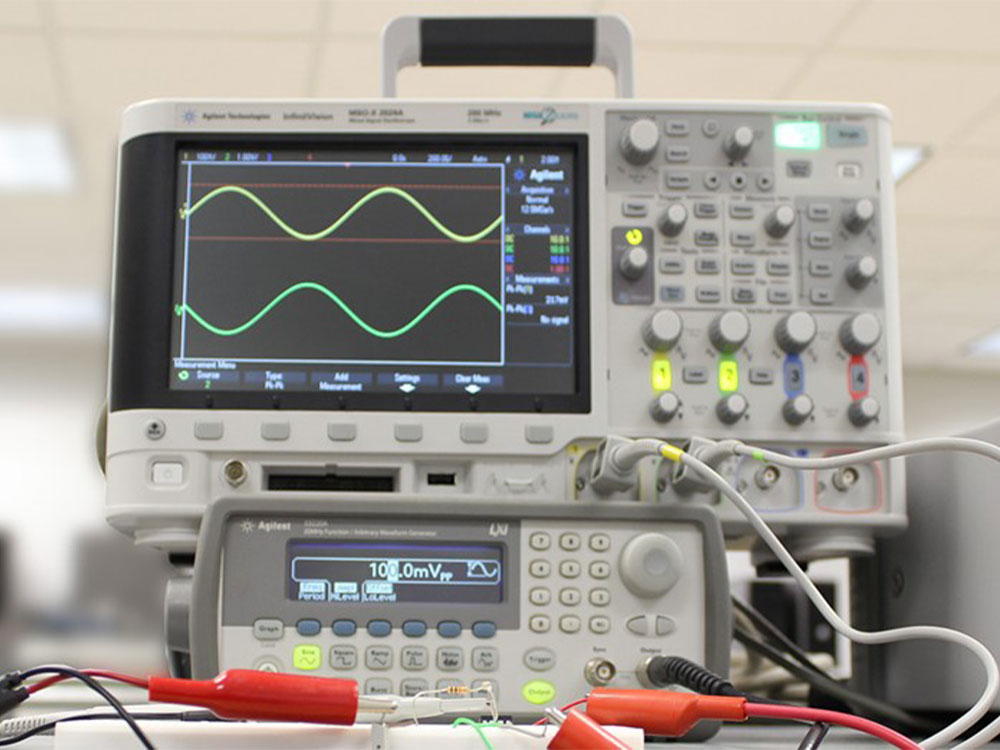
Are you a measure-ophile?
By George Moraitis
Can you predict how a car will feel to drive from its spec sheet or brochure? Can you tell if you will enjoy someone’s company by reading their personality profile, or how a meal will taste from looking at the recipe? You can get a rough idea of what to expect but you have no way of knowing until you actually experience things.
In the same way, audio equipment measurements will give you some important information and a rough idea of what to expect but how useful are raw measurements in predicting how enjoyable a component will sound to you?
I am by nature an ‘information junkie’.
I am very interested in having as much information as possible on what I’m doing. In my early career as a commercial pilot, collecting information about every aspect of a proposed flight was imperative. Aside from Nirvana Sound, I’m also involved with Dohmann Audio where we are constantly measuring resonance forces and the transfer of energy between mechanical systems. If we didn’t take those measurements, we would not be able to identify areas to improve and we would not know if a proposed technology had made a difference to our turntables.
I believe that often what separates great sounding products from the lesser sonically performing products is well researched, well applied engineering practices. Technologies and methods that push the envelope of sound quality would simply not be possible if designers did not apply stringent testing & measurement practices in the development of their products. Collecting a large archive of data can eventually reveal some correlations between what is measured and what is heard.
Having said that, I have observed that:
There is a limited correlation between what is being measured and how that translates to the actual experience of music in a Hi-Fi system. Measurements have limited value in giving us an idea of how enjoyable a component/system will sound.
The Distortion-less Amplifier
Distortion is a favourite target of measure-o-philes. There are many forms of distortion that can exist in the electrical environment of an amplifier. The type and amount of distortion can certainly affect the accuracy and quality of the sound. Distortion has become a perennial topic among the spec-sheet warriors because it’s relatively easy to measure.
Perhaps it’s not a surprise then that a weird perfectionist culture has slowly evolved in certain sections of the audiophile community where some believe that an amplifier’s distortion figures are the key criteria by which its sound quality should be judged. Less distortion equals better sound and more distortion equals ‘avoid this amp’.
A few years ago, a new amplifier brand launched and its claim to fame was that it had 0.00000000001% Total Harmonic Distortion (or something like that). Audio magazines were quick to publish front cover images with captions like ‘best amplifier in the world?’ and ‘World’s first distortion-free amp!’. I remember going to a launch event for the brand, keen to hear this new technology for myself.
Surprisingly, the sound left me cold. To my ears, the sound had incredible clarity and resolution but there was no emotion in it. I closed my eyes and tried to get into the music but I couldn’t relax and surrender to it. I kept having thoughts like ‘the shimmer of the cymbals is so impressive’ but I never managed to connect with the artist wholeheartedly. The lack of distortion was impressive but I had no desire to own this amp. It became an intellectual curiosity.
Have you ever asked yourself what levels of distortion are audible to you? I can definitely hear 10% but can I hear 1%, or 0.1%? I’m not sure that I can. More importantly, does it even matter? At what point does it become purely academic?
Many experienced audiophiles have said that listening to a quality Single Ended Triode (SET) amplifier ranks among the most enjoyable, memorable sound they have ever experienced. Purity, immediacy, direct connection to the music, emotional communication… this is how these amplifiers are often described. Yet they are one of the most high-distortion amplifier designs around!
I’ve heard many brands and models of ultra-low distortion amplifiers that also had a wonderfully captivating sound. It seems to me that there are many other characteristics that matter to me a lot more than low distortion figures.

Live music is full of distortion and imperfections
Ask most music fans about their best music experiences and many will list live concerts or shows that they remember fondly. I’m the same – when I’m experiencing a great live performance, my senses are heightened, the hair on the back of my neck stands up and the music is experienced holistically by my body, mind and spirit.
If you meet a stranger and find out that you were both at the same concert in the past, isn’t it amazing how that creates a bond between you? Instant conversation, sharing your highlights, a knowing smile. The reason for this connection is emotional – music is an ultimate emotion conveyor and live music is an ultimate type of experience.
Yet when you’re at the venue having the time of your life, you are experiencing many acoustic imperfections. The sound is bouncing off the ceiling, the stand, asymmetric structures, the seats, people’s heads… The levels of distortion are very high, the imaging is compromised, the resolution & accuracy is… whatever.
But you don’t care at all!
In fact, you never think about it, or worry because you’re lost in the visceral experience of it. Live music has a certain energy and dynamic immediacy that draws you in. Even a busker playing a saxophone in the street has a certain way of captivating you that’s beguiling and demands your attention.
The limited correlation between measurements and the human experience
I encourage you to investigate what the published measurements actually mean and how they actually relate to how you hear music. I have often thought that when I’m cooking, I can accurately weigh each of the ingredients, choose one version of ingredient over another, control some of the inputs (eg. how long the food spends in the oven), the sequence and timing of events.
When the cooking process is over, what I’m tasting are the different elements, flavours, textures and sensations that arise from the fusion of those ingredients and the cooking technique. The fact that in reality, I’ve probably set fire to my kitchen and created something not fit for human consumption is another story.
Measuring aspects of a sonic presentation is a similar situation. For example, when assessing a loudspeaker’s musical accuracy, voltage sensitivity is a common measurement. One would then assume that if you directly compared two speakers that measured an identical voltage sensitivity, they should exhibit the same (or very similar) sound in terms of musical/technical accuracy, right? But in practice, audible differences become apparent. It’s the same when assessing frequency balance by measuring electrical impedance magnitude & phase, etc.
We recently worked with a client who had researched the effect of power cables and had concluded that they did not make a difference to a hi-fi system because according to some studies, they did not decrease the distortion levels inherent within a power delivery system. When we swapped out his generic cables for some high-performance power cables, his system came to life in such a palpable way, he was visibly shocked. We explained that the measurements that were conducted in those studies were not really measuring the parameters that mattered in power delivery.
Using various measurements to form sound quality judgements is a worthwhile exercise and can yield some valuable insights. However, you can see that there are serious limitations here. Not to mention the numerous variables associated with how humans hear and experience music subjectively. We simply do not have a way of measuring data that translates directly to the holistic musical experience.
If measurements are limited, how do we judge audio gear?
Most designers of high-quality audio equipment are attempting to preserve the original signal with the least amount of losses & interferences as possible and create a reproduced sound which is as close to the original recording as possible. The aim of the musical system is to do this while adding the least amount of its own sonic character, flavour or ‘signature’.
I feel that we should always aim for our system to be as ‘uncoloured’ as possible but there’s also important aspects that make the experience special, like realism, energy, ‘naturalness’ and ‘believability’. These can only be judged in an organic, spontaneous way by a living emotional being.
Unless someone is able to measure enjoyability, or come up with an emotional connection scale, or foot-tapping boogie factor (FTBF!), then it’s up to us to audition the gear and personally experience it.
My approach is to clear my mind of expectations, turn on the music and ‘feel it’. Open yourself to it and feel it with your whole being. Then check to see if it has engaged you with full absorption – you’ll know if it’s right for you.
There’s nothing better than meeting music lovers who have personally curated their own unique combinations of various audio components and tell you “I absolutely love it!”
What about you? Are you a measure-ophile?
